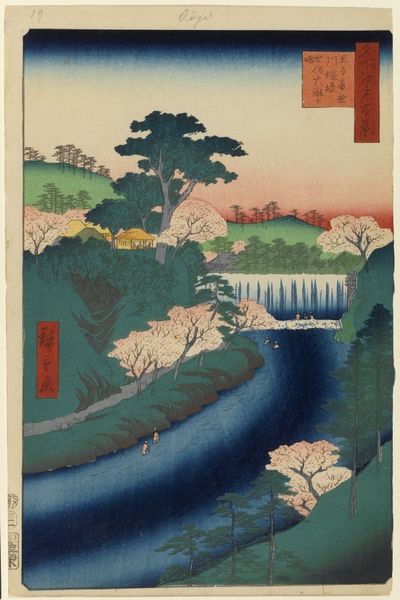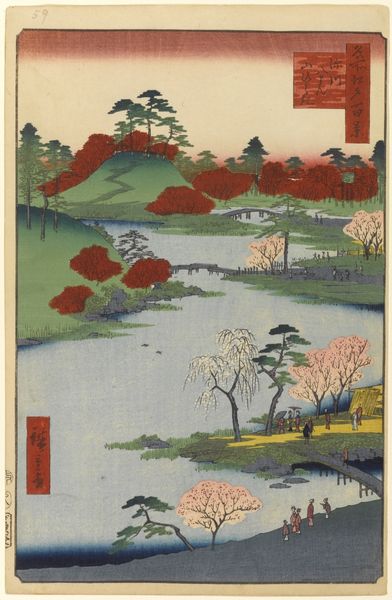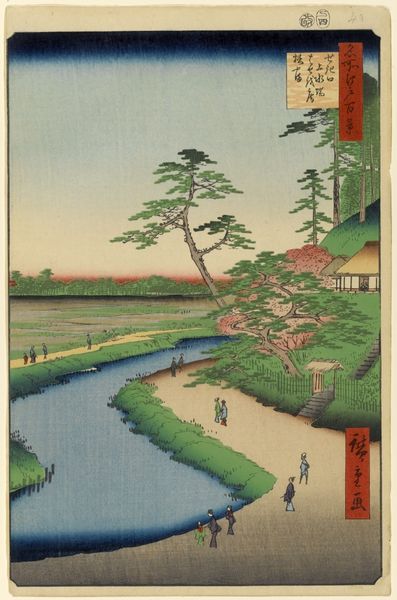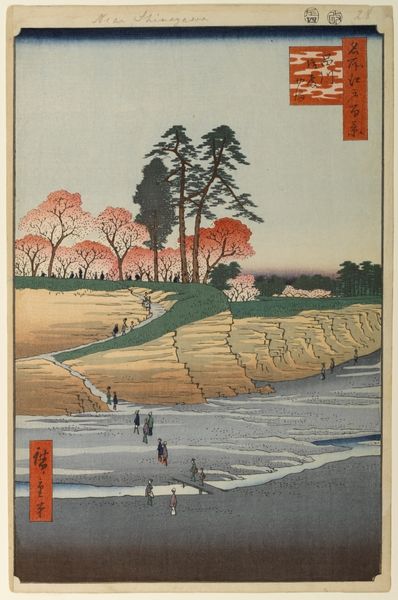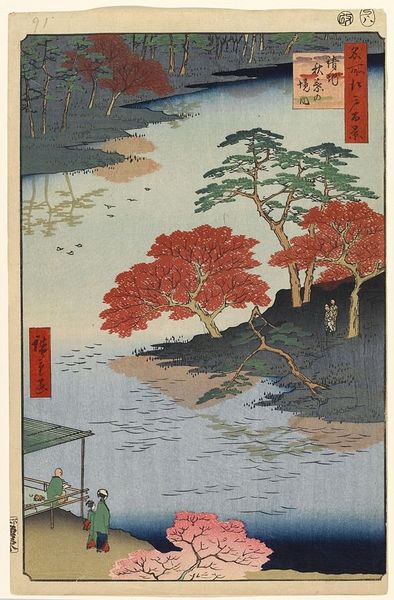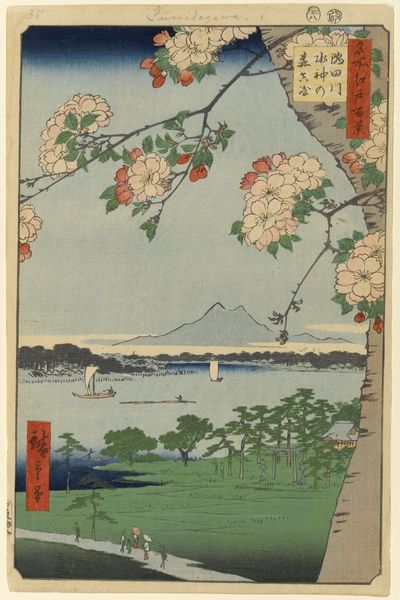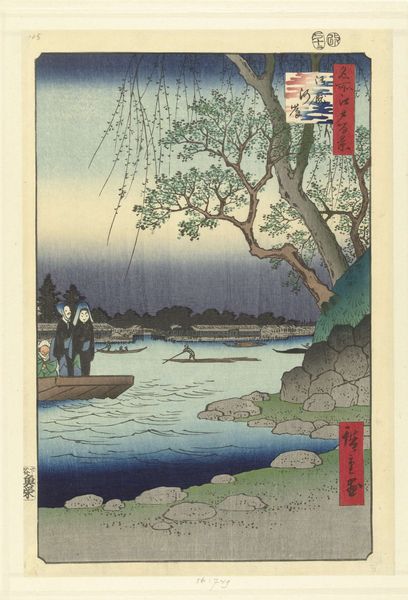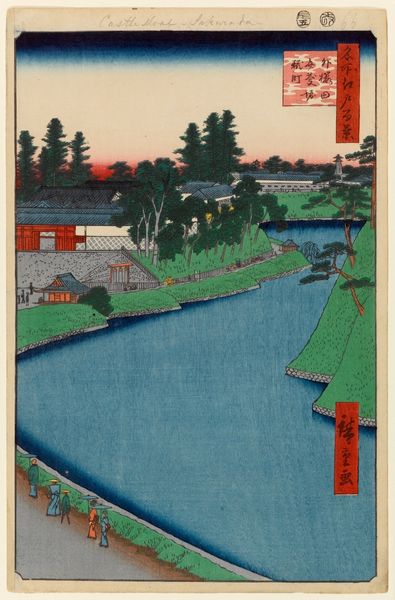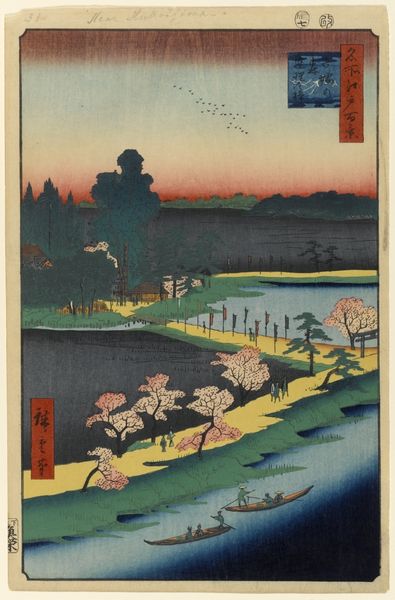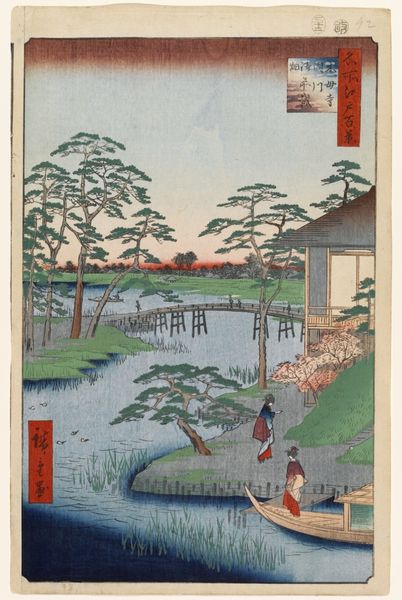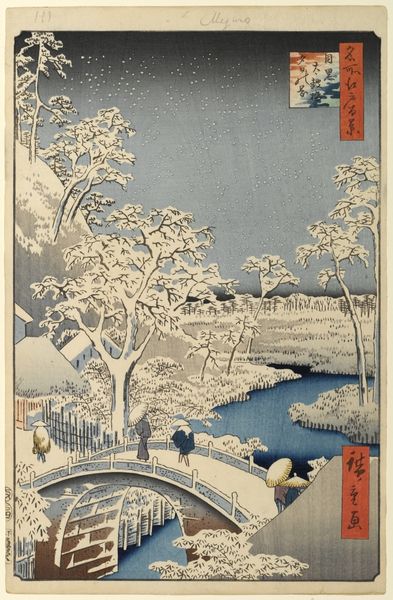
print, woodblock-print
#
water colours
# print
#
asian-art
#
landscape
#
ukiyo-e
#
woodblock-print
#
orientalism
Copyright: Public domain
Curator: I am struck by the calm stillness conveyed in this print. Editor: Well, let me introduce you to this vibrant woodblock print entitled "23. Chiyogaike Pond in Meguro," created around 1857 by Utagawa Hiroshige. Note how he makes use of watercolours to achieve this dreamy visual. Curator: Indeed, the composition is exquisite, with the careful placement of the trees and the cascading waterfall leading the eye through the landscape. It feels incredibly peaceful, almost like a fleeting memory. I see it as more than just an exercise in capturing a natural scene. What were the typical uses and distributions for pieces such as this one? Editor: This work is a beautiful example of Ukiyo-e prints from the Edo period, where artisans crafted these using woodblocks, a practice central to its impact, where individual prints circulated widely in society, accessible to more than just elites. So it operated differently than something created only for the pleasure of an individual. Curator: The process surely does seem labor intensive. Look closely at the subtle variations in the printing of colors. There is this emphasis on form through careful layering that adds such richness. It also demonstrates the integration of natural landscapes into the daily lives and economic production in the region. Editor: You raise an interesting point on labor that gets lost often when analyzing these pieces. The artist chose the scenery, but it was a larger studio and workshop that ultimately delivered the product. And they sought commercial avenues for mass distribution in local communities, such as landscapes designed for consumption as tourist souvenirs, rather than for elite galleries. The distribution also supported a robust infrastructure for commercializing art at this time in Japan. Curator: Given its mass appeal, did it follow artistic conventions? Are we simply viewing art as a product or is there still more depth? Editor: Even within those constraints of mass appeal and efficient production methods, we still can observe the thoughtful application of color and depth to elicit an emotional response, drawing viewers into a harmonious blend of man and nature. The artist uses formal elements such as color and the dynamic angles of natural forces. I am now interested to examine more deeply the traditional conventions and artistic intention with this renewed view. Curator: Indeed, understanding the broader implications—labor, resources, social forces, economy, and materiality involved in making these prints—we have been given a more comprehensive appreciation. Editor: A great synthesis and new insights.
Comments
No comments
Be the first to comment and join the conversation on the ultimate creative platform.

